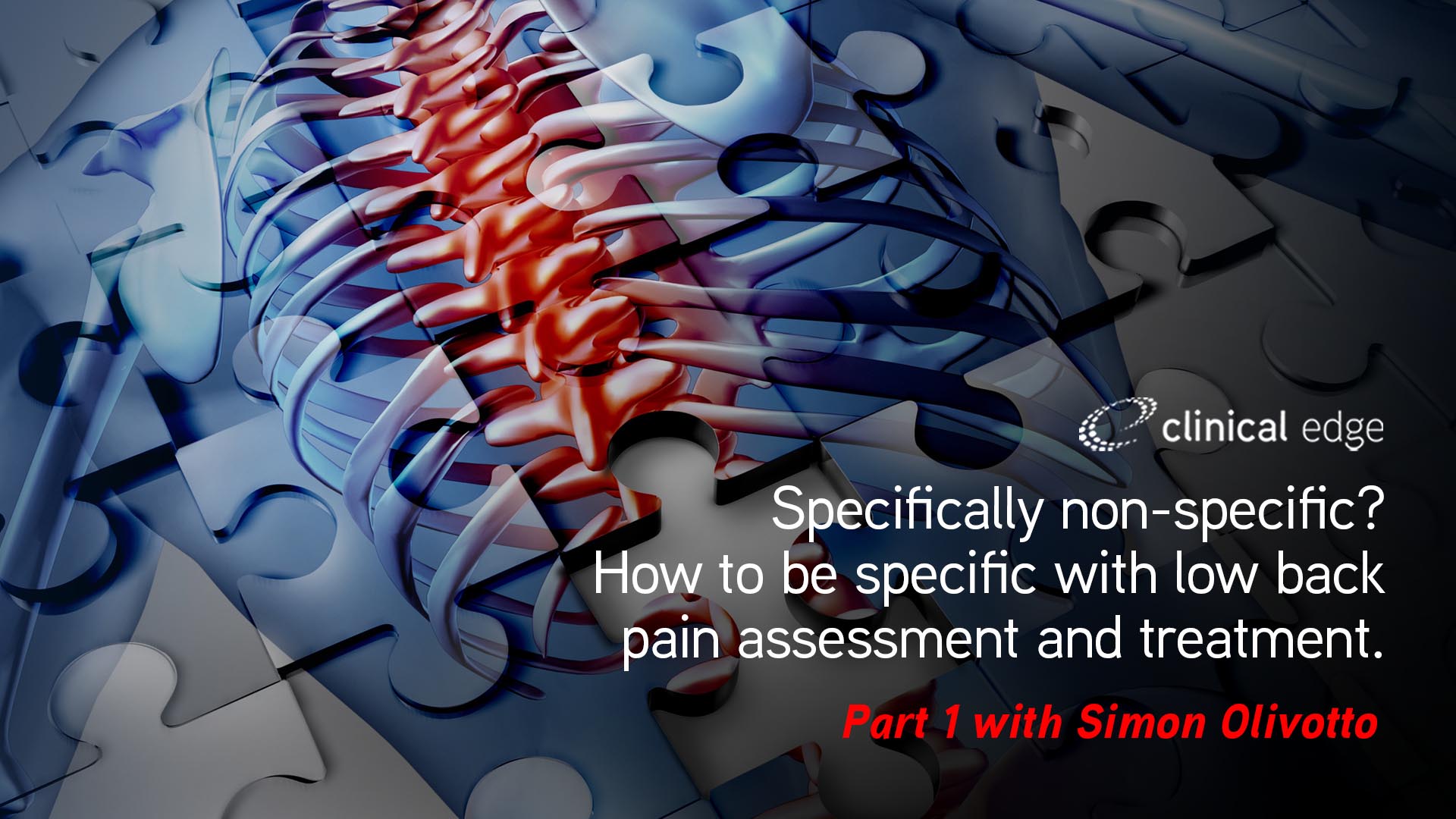How can you accurately assess and diagnose your patients low back pain? Can you be more specific than “Non specific low back pain”?
This presentation with Simon Olivotto (Specialist Musculoskeletal Physiotherapist, FACP) will help you know when it’s possible to diagnose your patients’ low back pain, and how to determine your patient's source of symptoms from your subjective examination and clinical tests.
It’s not always possible to make a pathoanatomical diagnosis, and in this presentation you’ll also discover how to still be specific with your assessment and treatment of low back pain to get the best results with each patient.
You’ll explore:
- How to use a simple assessment of patients with low back pain to:
- Identify or rule out radicular pain and radiculopathy.
- Determine the relevance of imaging findings.
- Identify whether your patients’ hip is contributing to low back pain.
- Rule in or out the SIJ as a source of symptoms.
- Pain referral patterns for SIJ, facet joints, discs, radicular pain, myofascial pain and interspinal ligaments.
- Clinical prediction rules for facet joints and disc nociception with discussion of the evidence for these.
- When patients have pain with sitting and flexion, what information does this give you?
- How to identify when LBP is discogenic.
- How to identify when your patients’ hip or SIJ is the source of their LBP.
You’ll explore the case of a 44 year-old male with a two year history of persistent low back pain, despite previous Physiotherapy and multiple medical interventions including facet joint injections and medial branch block. You’ll discover how this patient was assessed and treated, and how to use clinical reasoning to be more specific with your low back pain assessment and treatment.
Start a new approach to your low back pain assessment and diagnosis with part 1 in this three part series with Simon Olivotto on “How to be more specific with your assessment and treatment of low back pain”.
CLICK HERE to improve your assessment & diagnostic skills with a free trial Clinical Edge membership

